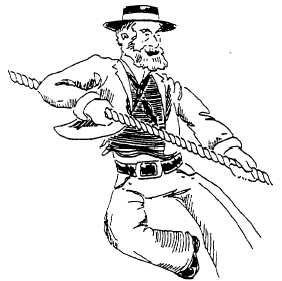| |
Military Requirements for Petty Officer Third
Class, NAVEDTRA 12044, Naval Education
and Training Program Management Support
Activity, Pensacola, Fla., 1991.
Military Requirements for Senior and Master
Chief Petty Officer, NAVEDTRA 12048,
Naval Education and Training Program
Management Support Activity, Pensacola,
Fla., 1991.
United States Department of Defense, Functions
of the Department of Defense and Its Major
Components, DoD Directive 5100.1, Office of
the Secretary of Defense, Washington, D.C.,
1987.
The United States Government Manual 1989/90,
Office of the Federal Register, National
Archives and Records Administration, Wash-
ington, D.C., 1989.
SUGGESTED READING
Mack, W.P., and T.D. Paulsen, The Naval
Officer’s Guide, 9th ed., Naval Institute Press,
Annapolis, Md., 1983.
U.S. Department of Defense, The Armed Forces
Officer, DoD GEN-36A, American Forces
Information Services, Washington, D.C.,
1988.
SEA CHANTIES
SEA CHANTIES WERE SONGS SUNG IN THE DAYS OF SAIL BY CREWS AS
THEY WORKED AT HEAVING THE LINES OR TURNING THE CAPSTAN. THE
SONGS’ RHYTHMS CAUSED EVERYONE TO PUSH OR PULL SIMULTANEOUSLY,
HENCE CAUSING A CONCERTED EFFORT AND BETTER RESULTS.
SOME BELIEVE THE TERM IS A DERIVATION OF THE FRENCH WORD
“CHANTER” WHICH MEANS “TO SING. ”
OTHERS MAINTAIN THE SPELLING
SHOULD BE “SHANTIES,” CLAIMING THE NAME REFERS TO THE SHANTIES
ALONG THE MOBILE, ALA. WATERFRONT WHERE MANY OF THE TUNES WERE
LEARNED BY SAILORS.
WHATEVER THE ORIGIN, CHANTIES WERE DIVIDED INTO THREE DISTINCT
CLASSES.
SHORT-DRAG CHANTIES, USED WHEN A FEW STRONG PULLS WERE
NEEDED; LONG-DRAG CHANTIES,
LONGER SONGS TO SPEED THE WORK OF
LONG-HAUL JOBS; AND HEAVING CHANTIES, USED FOR JOBS REQURING
CONTINUOUS ACTION SUCH AS TURNING THE CAPSTAN.
ONE MAN, THE CHANTY-MAN, STOOD HIGH ABOVE THE WORKING CREW AND
SANG THE MAIN LINES WHILE THE REST OF THE CREW ADDED THEIR
VOICES STRONGLY ON THE SECOND LINE.
ON THE LAST WORD, A COM-
BINED PULL MADE THE ROPES “COME HOME.”
A GOOD CHANTY-MAN WAS HIGHLY PRIZED BY OFFICERS AND CREW ALIKE.
ALTHOUGH HE HAD NO OFFICIAL TITLE OR RATE, HE WAS USUALLY RELIEVED
OF ALL DUTIES TO COMPOSE NEW VERSES FOR SEA CHANTIES.
11-18
|

